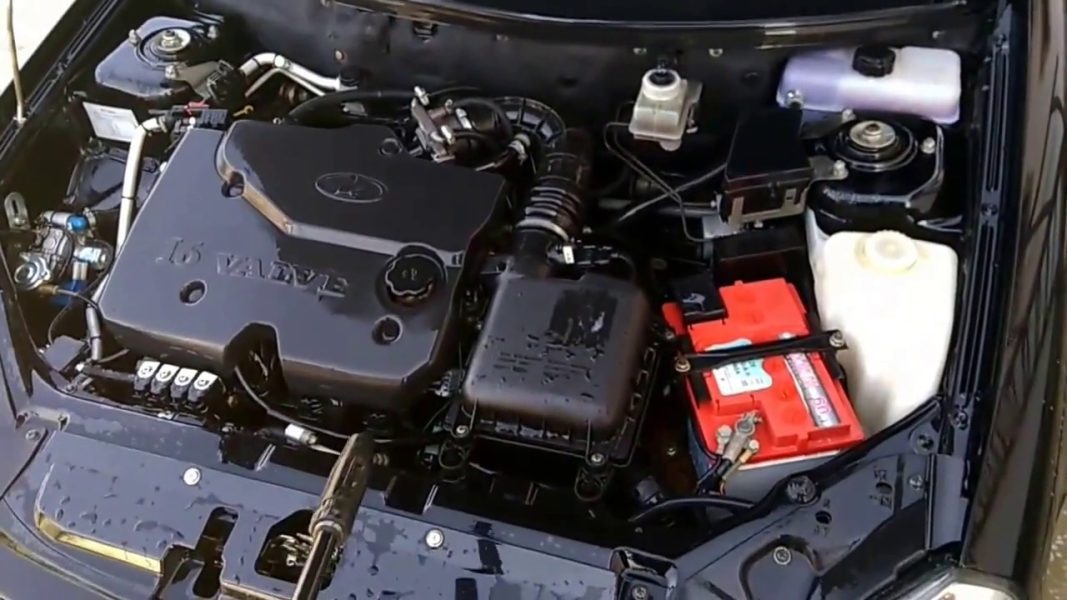
Мойка двигателя автомобиля: зачем нужна
Содержание
Каждый автомобиль в процессе эксплуатации загрязняется, даже если он ездит в городском режиме. Но если самостоятельно смыть пыль с кузова не составит особого труда, то что можно сказать о мойке двигателя? Обсудим, зачем она нужна, как правильно помыть агрегат, какой очиститель при этом использовать, а также какие у данной процедуры минусы.
Зачем моют двигатель
В случае со здоровьем человека действует правило: залог здоровья – чистота. Этот же принцип работает и в случае с механизмами. Если устройство будет поддерживаться в чистоте, оно прослужит положенный ему срок, но во многих случаях даже дольше. По этой причине машина должна быть чистой не только из эстетических соображений.
«Сердцем» любого транспортного средства является его силовой агрегат, будь то бензиновый, дизельный двигатель внутреннего сгорания (о разнице в работе этих агрегатов рассказывается в другом обзоре) или электрический мотор. Последний вариант не загрязняется так сильно, как ДВС. Причиной тому является принцип работы моторов. В агрегате, в котором используется энергия сгорающей воздушно-топливной смеси, применяется система смазки. По ее магистрали постоянно циркулирует моторное масло. Подробно мы не будем рассматривать устройство этой системы, об этом уже есть подробная статья.
Если коротко, то между головкой блока цилиндра, ее крышкой и самим блоком установлены прокладки. Подобные уплотнители используются и в других частях мотора и сопряженных с ним системами, например, топливной. Со временем эти материалы приходят в негодность, и из-за давления масла или топлива вещество начинает проступать на поверхность агрегата.
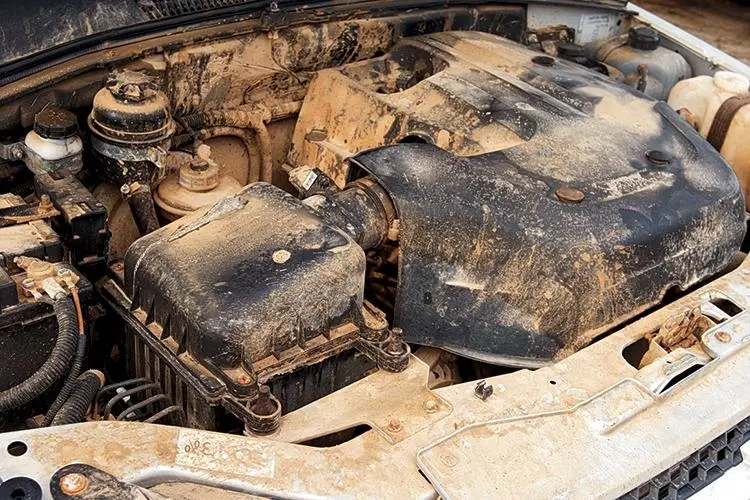
В процессе поездки в подкапотный отдел постоянно попадает поток воздуха. Это необходимо для эффективного охлаждения силового агрегата. Вместе с воздухом в моторный отсек попадает пыль, пух и прочая грязь. Все это задерживается на маслянистых потеках. В зависимости от технического состояния мотора это загрязнение в отдельном случае может быть минимальным, а может и критичным.
Если в системе охлаждения уже старые патрубки, не исключено, что тосол может просачиваться через повреждения, и прокапывать на горячий корпус ДВС. После испарения жидкости на поверхности агрегата часто остается солевой налет. Подобные загрязнения также необходимо удалять.
Хотя грязь попадает на движок, внутри он остается чистым (конечно, если автовладелец вовремя меняет масло). Тем не менее, с грязным силовым агрегатом могут быть проблемы. Во-первых, как уже было сказано, со временем уплотнители устаревают и могут дать небольшую течь. Если двигатель сильно загрязнен, сложно визуально определить этот дефект. Из-за этого автомобилист может не заметить проблему, и как последствие затянуть с ремонтом. Это в свою очередь может привести к серьезным поломкам.
Например, если у водителя нет привычки периодически проверять уровень масла (о том, как часто это нужно делать, читайте здесь) или заглядывать под свое транспортное средство, чтобы заметить лужу из масла, то он не сможет вовремя предпринять соответствующие меры. Нет необходимости рассказывать, что такое масляное голодание, и чем оно чревато.
Во-вторых, охлаждение силового агрегата обеспечивает не только радиатор и система, заполненная антифризом (о том, как работает СО, и из каких элементов она состоит, рассказывается отдельно). За это также отвечает и система смазки деталей. Но в конструкции кузова не зря делаются воздухозаборники. Они существуют, чтобы поток дополнительно охлаждал весь агрегат. Но если движок грязный, теплообмен затрудняется, и ДВС оказывается, будто закутан в одеяло. Охлаждающие системы будут и дальше работать, но термическая нагрузка на мотор будет выше, так как тепло от него не так эффективно отводится.
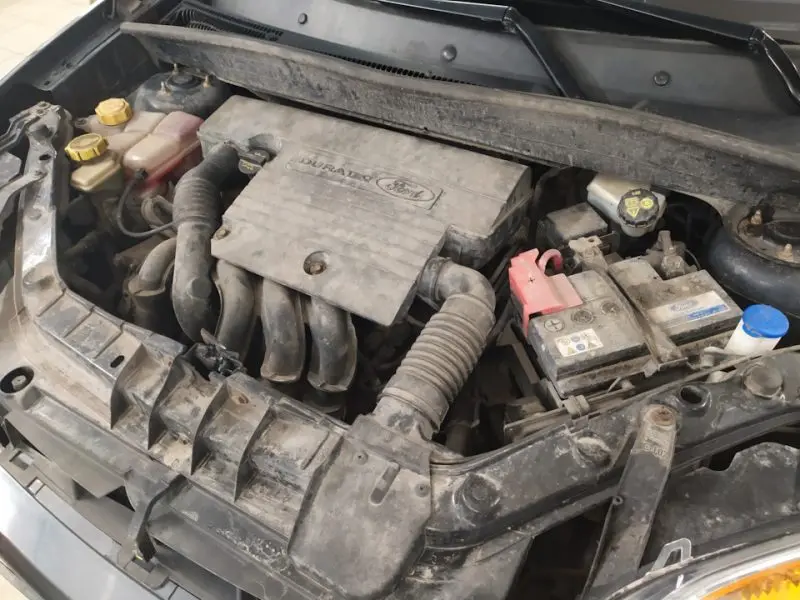
С повышением температуры двигателя каждая его деталь будет подвергаться дополнительной нагрузке, что приведет к их частичному расширению. Этот фактор напрямую связан с преждевременным износом ДВС.
Грязное подкапотное пространство может также негативно сказываться на электрической проводке. Тосол, бензин или масло способны повредить изоляцию проводов или обеспечить ток утечки в бортовой системе. По этой причине важно следить за чистотой электропроводки.
Еще одна причина, почему необходима чистка внутреннего пространства под капотом, это пожарная безопасность. Дело в том, что пары нефтепродуктов в совокупности с высокой температурой способны воспламеняться. Конечно, такое происходит по причине грязного мотора крайне редко.
На некоторых СТО существует правило, согласно которому владелец должен привозить свой автомобиль с более-менее чистым моторным отсеком. Кто-то перед выполнением ремонтных работ всегда очищает подкапотное пространство, потому что в чистоте намного приятней работать. Также есть те, кому просто нравится, чтобы машина была идеально чистая не только снаружи, но и изнутри.
И еще одна причина, почему многие автомобилисты проводят данную процедуру, это стремление придать транспортному средству товарный вид. Когда при купле-продаже проводится осмотр автомобиля, и поднимается капот, по внешнему виду силового агрегата можно оценить, в каких условиях эксплуатировался автомобиль. Но с другой стороны начищенные до блеска все механизмы и агрегаты под капотом могут вызывать подозрение, что продавец специально это сделал, чтобы покупатель не смог заметить следы утечки смазочных материалов.
Итак, как видим, есть множество причин, чтобы следить за чистотой силового агрегата. Теперь рассмотрим, как промывка проводится вручную и на автомойке.
Как проходит мойка
Чтобы отмыть автомобильный мотор, необходимо воспользоваться специальной клининговой компанией, предоставляющей услуги по чистке такого плана. Обычная автомойка тоже неплохо справится с удалением грязи из-под капота. Только задача данной процедуры не просто напором воды удалить загрязнения. Важно также сохранить мотор и другие механизмы авто работоспособными.
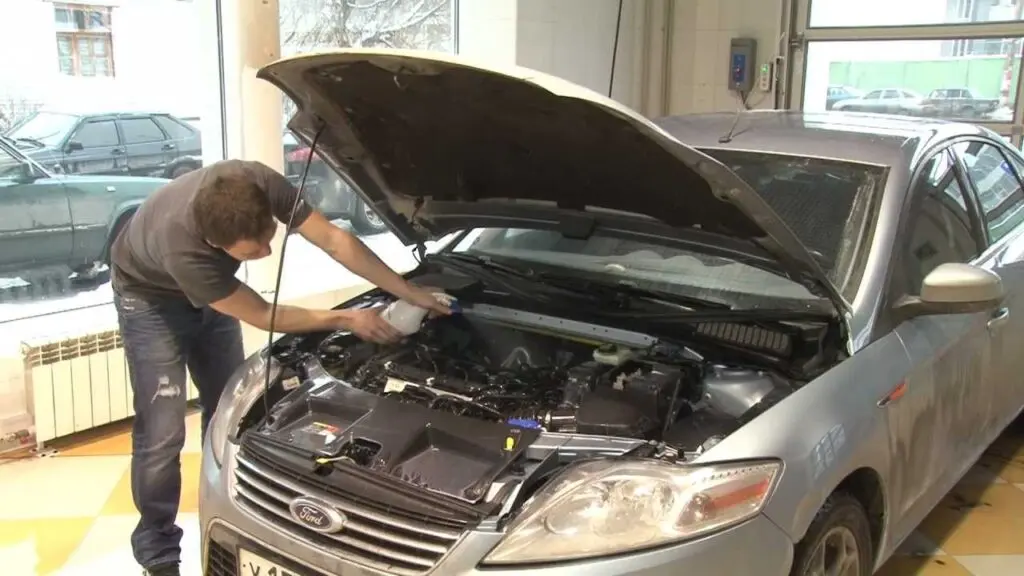
Специалисты детейлинг-компаний, предоставляющих услуги по комплексной и детальной очистке транспортных средств, знают, какая автохимия лучше всего подходит для удаления конкретных загрязнений. Также они понимают, как правильно выполняется очистка агрегата без вреда для него и расположенных рядом элементов разных систем и механизмов.
Некоторые автомойки предоставляют услуги по чистке моторов. Вот самые распространенные процедуры:
- Очистить подкапотное пространство могут при помощи бесконтактной мойки, как при обычной обработке кузова. Сразу стоит сказать, что это самый опасный метод для авто. По этой причине на таких автомойках стоит предупреждение, что после процедуры не дается гарантия на исправность силового агрегата.
- Еще один рискованный вариант – чистить мотор при помощи химии. Причина в том, что реагенты могут повредить какую-то пластиковую или резиновую деталь. Часто это сразу незаметно, но буквально через пару дней, когда вещество разъест стенки патрубка или проводки, водителю придется отвозить машину на диагностику и ремонт. На сервисах, предоставляющих подобные услуги, также имеется предупреждение о том, что компания не дает гарантию исправности транспортного средства.
- Очистка паром применяется намного реже, хотя в этом случае мотор меньше подвергается воздействию воды. Горячий пар хорошо удаляет все типы загрязнений, начиная с пыли и заканчивая старым масляным потеком.
- Самостоятельный домашний моющий процесс. Несмотря на то, что это самая длительная процедура, она эффективней и безопасней всех остальных. Только в этом случае можно гарантировать, что после очистки мотор и все системы автомобиля будут работать исправно. Когда машину чистит ее владелец, это происходит намного аккуратней, чем мастер, который не дает гарантию работоспособности транспорта после операции.
Если в местности, где находится транспортное средство, нет детейлинг-компаний, то почистить ДВС можно и самостоятельно. Эту процедуру нельзя выполнять так же, как проводится мытьё кузова (наносится пена, выжидается пару минут, смывается большим напором воды). Если мойка выполняется таким способом, можно быть уверенным, что какая-то часть в моторном отсеке обязательно пострадает. Это может быть электропроводка, генератор, какой-то датчик и т.д.
Безопасней всего использовать сухой тип очистки двигателя. Хотя в этом случае и используется вода, ее нужно небольшое количество. Ключевым очистителем является химический аэрозоль или жидкое средство, которым смачивается ветошь. После обработки поверхностей тряпки нужно промыть в чистой воде, и обрабатываемые элементы вытираются начисто, пока не исчезнет запах автохимии.
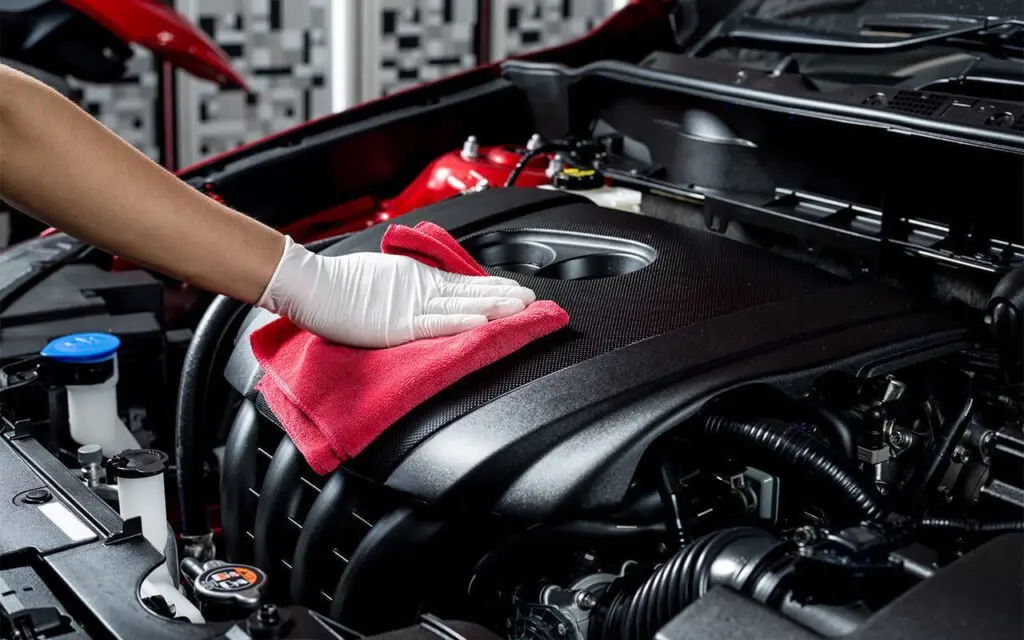
Вот несколько рекомендаций по самостоятельной мойке мотора:
- В первую очередь для этого нужно выделить достаточно времени. Чистка подкапотного пространства не терпит спешки, так как можно нечаянно повредить проводку или какой-то патрубок.
- Для эффективной и безопасной процедуры нужна правильная химия. О том, какой очиститель лучше всего подойдет, рассмотрим немного позже.
- Перед использованием моющего средства нужно внимательно ознакомиться с инструкцией по эксплуатации. Хотя это и не кислота, и не щелочь, в составе таких средств все равно входит большое количество агрессивных веществ. Если неправильно ими пользоваться рука может получить серьезные повреждения.
- Помимо личной безопасности необходимо также позаботиться и о безопасности окружающей среды. Моющая жидкость не должна попадать в водоемы. Чистка авто также не должна выполняться возле открытых источников питьевой воды и т.д.
- Обязательно заводим мотор, даем ему поработать. Он должен стать теплым, но не горячим, чтобы не получить термическую травму. Это ускорит процесс его сушки после очистки.
- Чтобы случайно не спровоцировать короткое замыкание, аккумулятор нужно закрыть, а в идеале вообще снять. О том, как это правильно сделать есть отдельный обзор. Еще один механизм, наличие воды в котором критично для его работы, является генератор. Перед чисткой отсека под капотом необходимо хорошо защитить этот механизм от контакта с влагой. Также необходимо закрыть патрубок воздушного фильтра и другие элементы, которые боятся контакта с водой.
- После нанесения чистящего вещества выжидаем несколько минут в соответствии с инструкцией. Затем средство нужно хорошо смыть. Ни в коем случае для этого нельзя заливать воду под напором. Лучше для этого использовать мокрые ветоши. Конечно, это будет намного дольше, зато безопасно для важных элементов двигателя и его систем.
Отдельно стоит упомянуть о том, как правильно чистить окисления на аккумуляторе и на площадке, где он устанавливается. Необходимость в этом может появляться в случае использования обслуживаемого аккумулятора (о том, какой это источник питания, и какие еще бывают модификации, читайте здесь). Нельзя удалять эти отложения простой влажной тряпкой. Визуально будет казаться, что площадка чистая, а на самом деле кислота просто развезлась по большей поверхности.
По этой причине перед обработкой этого элемента необходимо нейтрализовать кислоту, входящую в состав электролита. Для этого используется сода, растворенная в воде в соотношении один к одному. Процесс нейтрализации будет сопровождаться обильным образованием пузырьков воздуха и шипением (интенсивность этого зависит от степени загрязнения поверхности).
Как выбрать очиститель двигателя
В магазинах с автохимией можно найти много разных веществ, способных эффективно чистить мотор от любых загрязнений. Самый бюджетный вариант – автомобильный шампунь, однако он требует большего количества воды, чтобы его смыть с обработанной поверхности. В некоторых случаях такое средство может не справиться с серьезными загрязнениями.
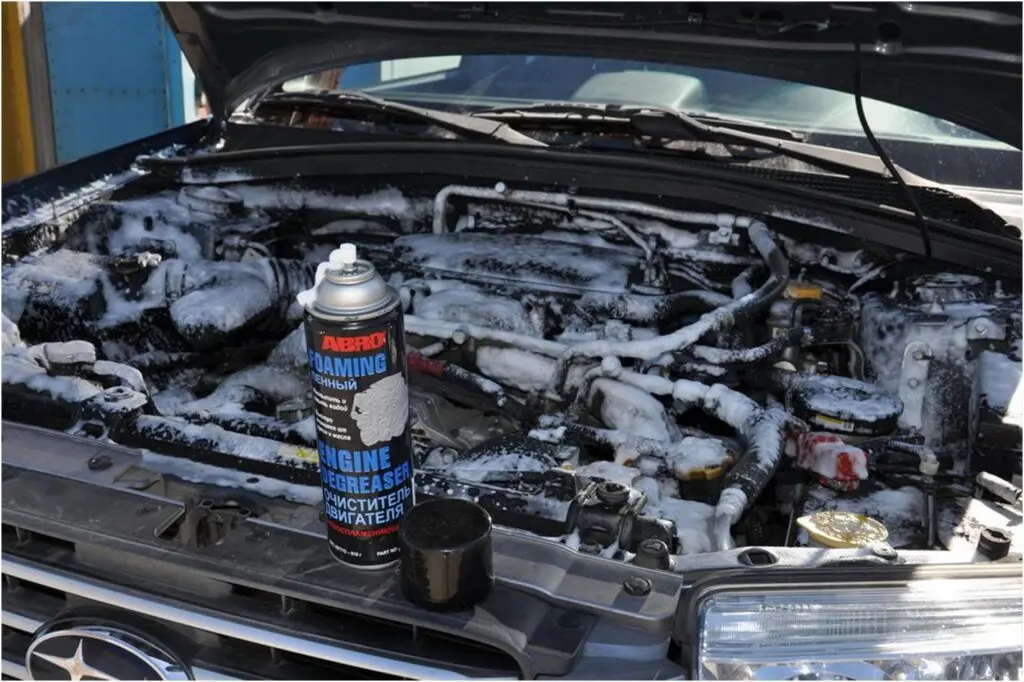
По этой причине для большего эффекта лучше воспользоваться одним из магазинных очистителей. Они реализуются в виде:
- Аэрозоля;
- Ручного триггера;
- Жидкости с высоким образованием пены.
Эффективней всего с грязью в подкапотном отсеке справляется аэрозоль, и удалять его остатки намного легче. Похожий эффект имеет распыление при помощи триггера, но в этом случае расход вещества будет больший. Если используется пенящееся средство, нужно также позаботиться о достаточном количестве чистой воды, чтобы споласкивать ветошь.
Как использовать очистители
Самым верным решением было бы тесно придерживаться инструкции производителя. Каждая компания, выпускающая автохимию, может использовать разные реактивы, которые имеют свое действие, поэтому невозможно создать общую инструкцию для всех этих веществ.
Общий принцип для каждых из этих видов очистителей следующий:
- Аэрозоль и ручной триггер. Обычно такое вещество разбрызгивается на очищаемую поверхность. Выжидается некоторое время. После этого грязь вытирается тряпкой.
- Пенящееся средство, например, автомобильный шампунь или гель для мойки кузова, обычно разводится в воде, чтобы образовалась пена. Ее наносят на очищаемую поверхность, тоже выжидают некоторое время, а затем удаляют мокрой ветошью или мочалкой.
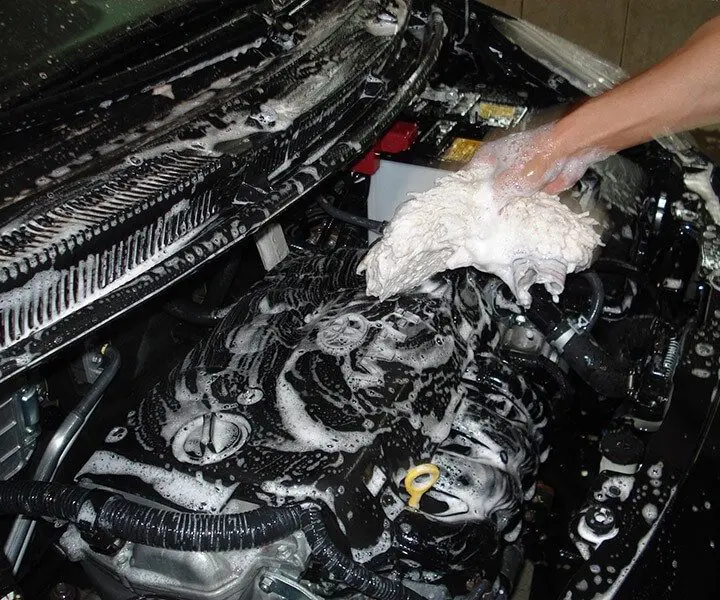
Также существуют средства, которые добавляются в воду для очистки паром или бесконтактной мойкой. Но об опасности использования таких методов мы уже говорили.
Что нужно сделать после мойки двигателя
В завершении очистки необходимо удаление всей влаги, особенно с проводов. Для этого можно на некоторое время оставить капот поднятым, чтобы ветер проветрил моторный отсек. Капли лучше удалить сухой тряпкой из хлопчатобумажного материала. Так выветривание влаги пройдет быстрее. Некоторые для ускорения процесса используют сжатый воздух, например, баллончики для очистки оргтехники. Самое важное условие – не использовать сильный напор, чтобы случайно не сорвать важный провод или патрубок.
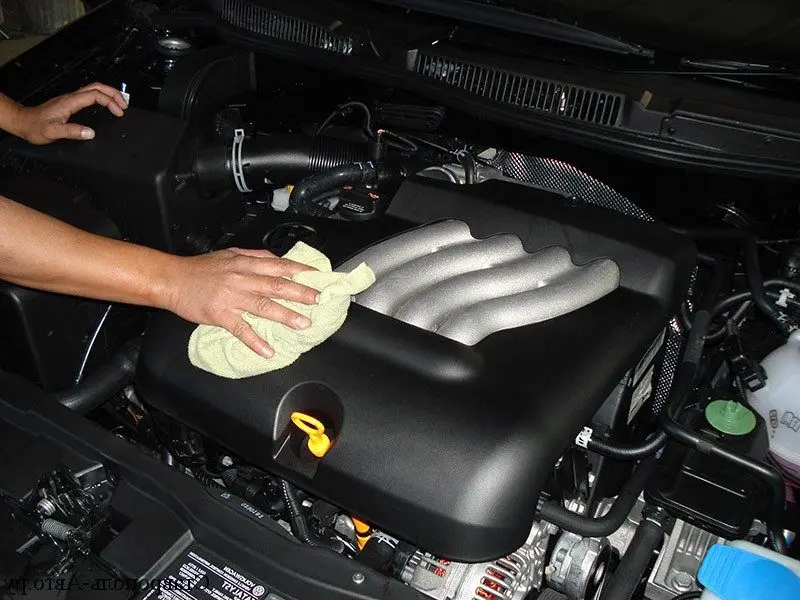
Чтобы полностью просушить машину после мойки, нужно завести мотор, и дать ему поработать до 20 мин. При этом капот пусть остается открытым, чтобы пространство хорошо проветривалось, и испарившаяся от горячего двигателя влага не конденсировалась внутри.
Мойка двигателя паром альтернатива или нет
Один из самых распространенных альтернативных методов автоматической мойки мотора – при помощи пара. Хотя подкапотное пространство и не заливается водой, все же некоторое количество влаги для этого используется. Суть процедуры сводится к тому, чтобы почистить силовой агрегат и другие элементы подкапотного пространства сильным напором горячего пара.
Обычно его рекомендуют автовладельцам, как альтернативу обычной ручной мойке (на нее тратится больше времени) или в качестве более безопасной автоматической мойки. Несмотря на заверения, что процесс проходит безопасно для машины, все же риск попадания влаги на электронику присутствует.
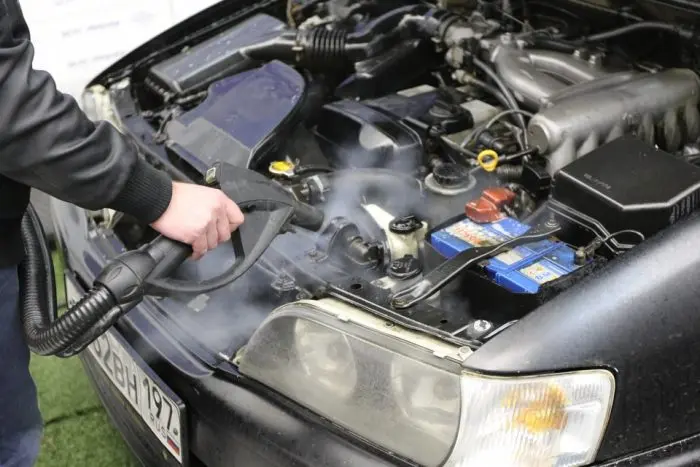
Любая процедура с использованием высокого давления нежелательна для моторного отсека, даже если используется просто продувка воздухом. Причина тому – риск повредить какую-то магистраль, например, сорвать патрубок системы охлаждения или где-то под кожухом провод какого-то датчика. После такой мойки придется отправлять машину на диагностику для поиска неполадок.
Плюсы и минусы мойки двигателя автомобиля
Итак, мойка двигателя имеет такие плюсы:
- Чистый агрегат лучше охлаждается. Внутренний процесс охлаждения протекает более эффективно, что окажется полезным во время длительных простоев в тянучках или пробках в городе. При этом масло не перегорает, и сохраняет свои свойства на протяжении всего рекомендуемого ресурса;
- Для некоторых автовладельцев эстетика транспортного средства – важный фактор, поэтому они уделяют этому много внимания;
- Легче заметить потери технических жидкостей как раз на чистом силовом агрегате;
- В зимний период дороги посыпаются разными реагентами, которые при контакте с маслянистыми веществами могут образовывать разные солевые отложения. В жидком состоянии при попадании на электропроводку такие вещества могут создавать токи утечки. Конечно, с новыми авто такое происходит не часто, но старые машины от подобного эффекта страдают чаще. Для того, кто следит за чистотой под капотом, не составит труда после зимы просто протереть агрегат и провода чистой ветошью;
- Чистый мотор приятней обслуживать и ремонтировать.
Несмотря на такое количество плюсов, у мойки двигателя есть и свои «подводные камни». Например, в результате неаккуратного выполнения процедуры контакты разных устройств подвергаются воздействию влаги. Из-за этого может пропадать сигнал от важного датчика или другой части электрической схемы транспорта.
Подобное негативное воздействие влаги оказывается на высоковольтные провода и свечи зажигания. Если на них много влаги, есть большая вероятность, что мотор не заведется или будет работать нестабильно, пока магистраль не высохнет.
В самых сложных ситуациях, когда невнимательный автомобилист забыл отключить аккумулятор или плохо его закрыл, можно спровоцировать короткое замыкание. В зависимости от типа бортовой системы может выйти из строя важное оборудование.
Подытоживая, скажем, что ручная мойка ДВС полезна, но во избежание проблем крайне важно использовать минимальное количество воды, и быть максимально аккуратным.
В завершение предлагаем небольшое видео о детейлинг-мойке мотора:
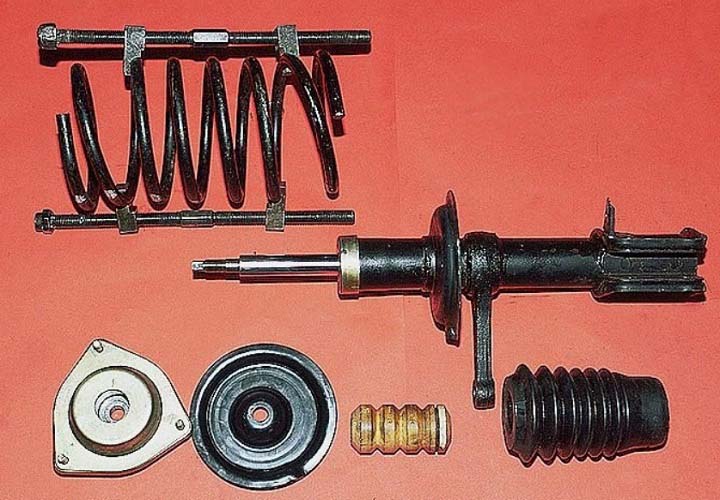
Один комментарий
ብሩክ አበጋዝ
በጣም አሪፍ ትምህርት ነው ከዚህ ብዙ ተምሪያለው እኔ ያሪስ አለችኝ ማሳጠብ እፈልጋለው የት መጥቼ ማሳጠብ እችላለው አድራሻቹን እባካችሁን ብትሰጡኝ